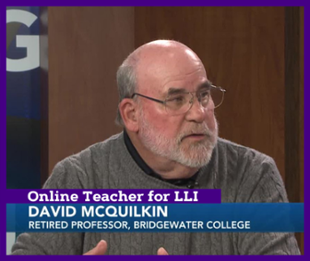Each One Teach One: A primary step to bridging digital divides
School of Professional & Continuing Education (SPCE)
During the first quarter of 2020, businesses and universities quickly adopted online tools as a way to support remote work and learning. Today, over nine months later, many of us continue to connect virtually as the pandemic persists and we await vaccine rollouts. Zoom has become familiar, and the virtual boardroom or classroom is now a normal day at work.
That is for those who are connected.
Since December is a month that invites reflection, think back to February and March during the rush to maintain uninterrupted services for students, clients, and customers. How often did your team discuss the historical, institutional, and structural barriers that limit technology access and use? What choices did you make to help eliminate and reduce these barriers?
If you answered “very little” or “very few,” your responses are understandable. Systems created hastily aren’t often designed for full inclusion. Odds are, we all know more than we did at the start of the pandemic and likely have a better understanding of who has been left behind. Moving forward, the challenge is figuring out how best to promote digital inclusion and equity.
The National Digital Inclusion Alliance (NDIA) is a national advocacy organization that seeks to put an end to digital divides. This coalition of non-profits, policymakers, and academics defines digital inclusion as the ability of individuals and groups to access and use information and communication technologies. Digital equity, on the other hand, ensures all individuals and communities, including the most disadvantaged, have the information technology capacity needed for full participation in society, democracy, and economy. If equity is the goal, inclusion is the strategy to reach it.
As more and more of daily life and work moves online, we must address digital inequity as part of our diversity and inclusion efforts. This includes directing intentional focus on those disproportionately affected by digital exclusion, including seniors and other highly vulnerable and disadvantaged groups. Being left out and left behind has real consequences in a world rushing toward an all-digital future, a reality accelerated by the pandemic.
The NDIA rightfully argues that “digital equity is necessary for civic and cultural participation, employment, lifelong learning, and access to essential services.” Those who are unable to engage with today’s digital world find themselves on an uneven playing field, struggling to participate —much less compete —and subject to increased social isolation and exclusion.
One of the ways PCE supports a digitally inclusive community is by addressing disparities in digital skills, particularly among adult learners. In 2020, the Lifelong Learning Institute (LLI) provided Zoom training to more than 300 older adults. The program also hosted more than 150 online meetings, providing ample opportunity to practice skills and develop greater self-sufficiency.
“Teachers needed training, too,” said Rodney Wolfenbarger, who serves as LLI program director. Many of the instructors employed by the program are retired educators. Wolfenbarger described how the sudden shift to online learning created anxiety for instructors, who were tasked with adopting new technology and using unfamiliar tools in an unnatural setting —a physical classroom with virtual students.
He specifically mentioned working with David McQuilkin, who retired in 2009 after having taught history and political science at various colleges and universities for more than 40 years.
Although a bit apprehensive, McQuilkin embraced online teaching as an opportunity to acquire new digital skills. Learning about the many ways the Lifelong Learning Institute supports teacher development calmed David’s initial hesitation and concern.
In addition to group training, instructors received one-on-one consultation to troubleshoot issues and coordinate course delivery. Frequent check-ins with staff both immediately before and after meetings provided the right training (and positive reinforcement) at the right time. Open access to university teaching facilities ensured adequate tools, including the use of modern computer equipment and high-speed connectivity. And digital safety concerns were entrusted to a staff member who co-hosted meetings, managed security settings, and remained on-hand to help if needed.
 Upon the successful completion of his course, David wrote to staff to comment on the importance of the personalized training, guidance, and support he received.
Upon the successful completion of his course, David wrote to staff to comment on the importance of the personalized training, guidance, and support he received.
“By the end of the five weeks, everything felt normal —or at least as normal as circumstances allowed,” he wrote. “I wish to extend my thanks for the outstanding level of support provided for the course. It began with our weekly meetings before the start of class to make certain that all was in order, to your behind the scenes presence to make certain that everything functioned without mishap, to the fact that every morning the entire system was up and ready to go when I arrived. It made teaching easy.”
Creating such personalized learning environments can be challenging, but high-quality training and support are among the best ways to generate interest and promote digital access and effective use. This is especially important among older adults. As people today are living longer than ever, digital skills will play a larger role in determining one’s quality of life.
“You have to ask,” Wolfenbarger said, “Can they join? Can they participate? Looking ahead, will they be able to access the services needed to live a quality life?”
Such is the world today and without access and training older adults risk being shut out from a large portion of society. So what can we do?
“We have to accept that this is a lifelong learning process, especially considering the rate at which technology advances,” Wolfenbarger said.
“Whenever someone says ‘That’s not for me’ we have to wonder. Does it reflect a lack of interest or a lack of skills? Our first response should be How can I help?”
Looking ahead to the new year, imagine how much more digitally inclusive our community could become if each of us made a resolution to reach across digital divides to ensure one less person is left behind.
